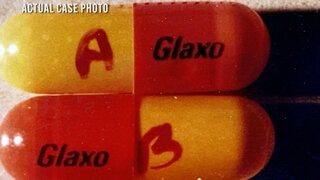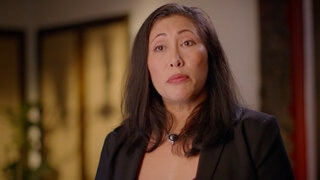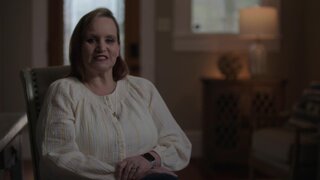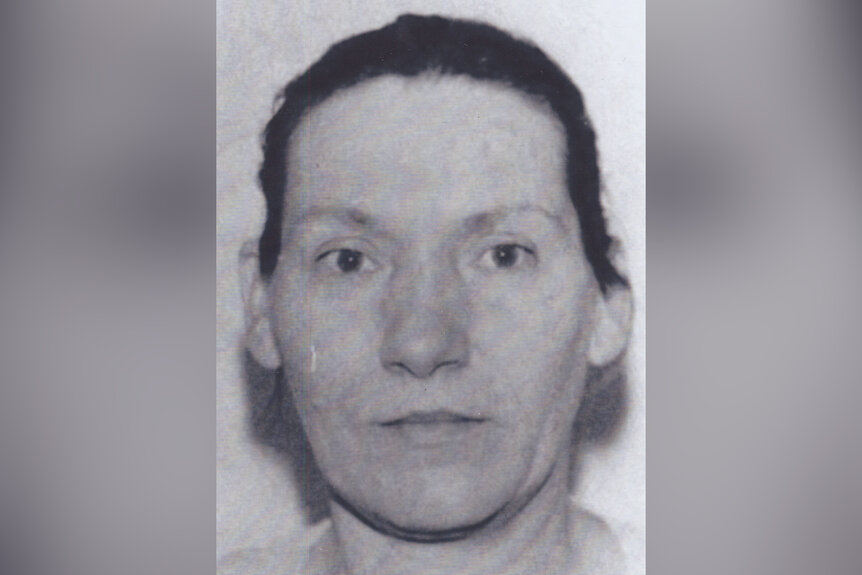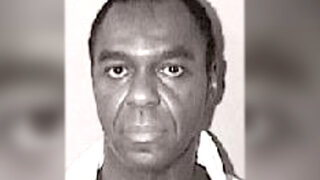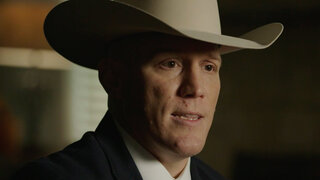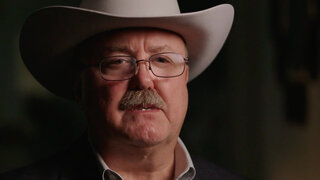Create a free profile to get unlimited access to exclusive videos, breaking news, sweepstakes, and more!
‘A Pattern Of Evil’: Florida ‘Black Widow’ Killed Her Son And Husband Before Attempting A 3rd Murder
After a man was almost killed in a firebombing attack, investigators focused on his girlfriend, Judy Buenoano. They soon realized she was connected to other mysterious deaths.
On June 25, 1983, Pensacola, Florida, emergency personnel responded to a car explosion outside a restaurant that left 37-year-old John Gentry critically injured.
“The injuries to John Gentry were massive: horrific internal injuries,” crime journalist Pat Lalama told “Exhumed: Killer Revealed,” airing Sundays at 7/6c on Oxygen. “Pieces of pieces of shrapnel [were)]stuck to his body from head to toe.”
Police inspected Gentry’s car and concluded that sticks of dynamite had been stashed in the trunk and the explosion wasn’t an accident.
“It appears that the car had been rigged with wiring through the tail light,” said Lalama, “so that when the tail lights would go on — boom.”
Investigators said they “knew right then and there was an attempted murder.”
Gentry survived his extensive injuries but was in a coma for several days.
Investigators interviewed his family and close circle, including his girlfriend, Judy Bueonoano. She’d met Gentry in 1983 and embarked on what witnesses called “a whirlwind romance.”
Within six months, she and her teenaged children, James and Kimberly, moved in with Gentry. Over the next three years, the relationship grew. Their professional lives did, too: Buenoano, a registered nurse, opened a beauty salon.
Bueonoano claimed a former partner in his interiors business could be responsible. There had been a rift as well as lawsuits. But when Gentry regained consciousness four days after the bombing he dismissed that idea.
When investigators questioned Gentry, he revealed that he had been hospitalized for a strange, recurring ailment about six months earlier. The mystery illness left him violently sick with severe stomach cramps and vomiting.
His medical issues coincided with when be began taking vitamin capsules Bueonoano had given him to help fight off a cold. With Gentry’s permission, the pills were retrieved for analysis.
Awaiting lab results, investigators focused on Buenoano, whose friends and family called her “classy” and “bigger than life.” When police ran Bueunoano’s name through their database nothing alarming popped up.
So, to broaden their net, they searched for Goodyear, a translation of her surname. Investigators found that she had indeed changed her name from Goodyear to Buenoano in 1978.
They also learned Buenoano had given birth to a son, Michael. She raised him on her own before she met and married James Goodyear, a sergeant in the U.S. Air Force, who adopted Michael.
In 1970 James received orders to go to Vietnam. When he returned, his life took a dark turn. In addition to hallucinations, he suffered from severe cramping and vomiting that put him in the hospital.
On September 15, 1971, James Goodyear died. The autopsy determined Goodyear’s official cause of death was respiratory failure due to cardiovascular collapse.
“In layman’s terms, that would be his heart and lungs and kidneys all failed,” Dr. Rebecca Hsu, forensic pathologist, told producers. “Failure of any organ could be caused by a number of things. It sounds like something that would happen as a result of natural causes.”
But was it? Pensacola detectives were struck by Goodyear and Gentry both experiencing severe cramping and vomiting symptoms.
“At that point in time, Judy became very suspicious to me,” retired Det. Ted Chamberlain, of the Pensacola Police Department.
Suspicion deepened when the lab report found that Gentry’s pills had been tampered with and contained paraformaldehyde, a disinfecting agent that can be used in salons.
Bueonoano denied any wrongdoing and refused to speak with detectives. Despite her silence, detectives continued to dig into her background. They discovered that her son, Michael, had also been in the Army.
Like James Goodyear, Michael suffered debilitating muscle weakness, cramps, and vomiting. The source of his sickness was traced to arsenic poisoning. The effects led to paralysis in his legs and one arm. He wore heavy braces to help him get around.
In 1980, Michael drowned during a boat trip with his mother and his adoptive father. Local police chalked it up to an accident. But Chamberlain had grave doubts.
His uncertainty deepened when he learned that Michael’s life insurance payout to his mother was, Chamberlain said, “probably $100,000.”
Investigators also learned that the payout came at a time when the salon was having financial trouble, according to “Exhumed: Killer Revealed.”
Between James Goodyear’s military life insurance and his own police, Buenoano received around $90,000 following his sudden death.
Detectives spoke with Gentry, who told them that Buenoano had suggested increasing his $50,000 life insurance policy tenfold. They also learned that she had gone ahead and upped the benefit.
Bueunoano's business was searched, where detectives found paraformaldehyde. At her home they found wires in her son’s room matching ones used in the car bomb.
Investigators believed that Bueonoano enlisted her son to wire the explosive device — Gentry said that he had asked Buenoano’s son James to install new speakers in his car.
“I think James was willing to do whatever his mom asked him to do,” said Vicki Dunlap, a family friend.
Judy Buenoano and her son, James, were arrested for the attempted murder of John Gentry. To establish a pattern, investigators obtained a court order to unearth the body of James Goodyear. On March 14, 1980, more than a decade after his burial, the exhumation was carried out.
The medical examiner’s toxicology report found evidence of acute and chronic arsenic poisoning.
“There was enough arsenic in James to kill 13 people,” said Chamberlain.
The death certificate was amended to match these findings, and the cause of death was changed to homicide.
After a year-long investigation into the deaths of Michael and James Goodyear and to the attempted murder of John Gentry, authorities charged Buenoano with all three cases.
In 1984, she was convicted of killing her son, Michael. She was sentenced to life without parole. Seven months later, she was tried and found guilty of the attempted murder of John Gentry. She was sentenced to 12 years for that crime.
Buenoano’s son, James, was acquitted of all charges connected to the car bombing attempt on Gentry’s life.
In October 1985, following that trial, Buenoano, then 41, was tried for the murder of James Goodyear. She testified on her own behalf, denying any guilt.
On November 1 of 1985, she was convicted of first-degree murder. Later that month, she was sentenced to death, CBS News reported.
On March 30, 1998, 54-year-old Judy Buenoano was led to the Florida State Death Chamber.
“By 7:13 a.m., Buenoano, 54, had become the first woman executed in the state in 150 years and the first woman to die in the chair,” the Orlando Sentinel reported.
To find out more about the case and others like it, watch “Exhumed: Killer Revealed,” airing Sundays at 7/6c on Oxygen.
